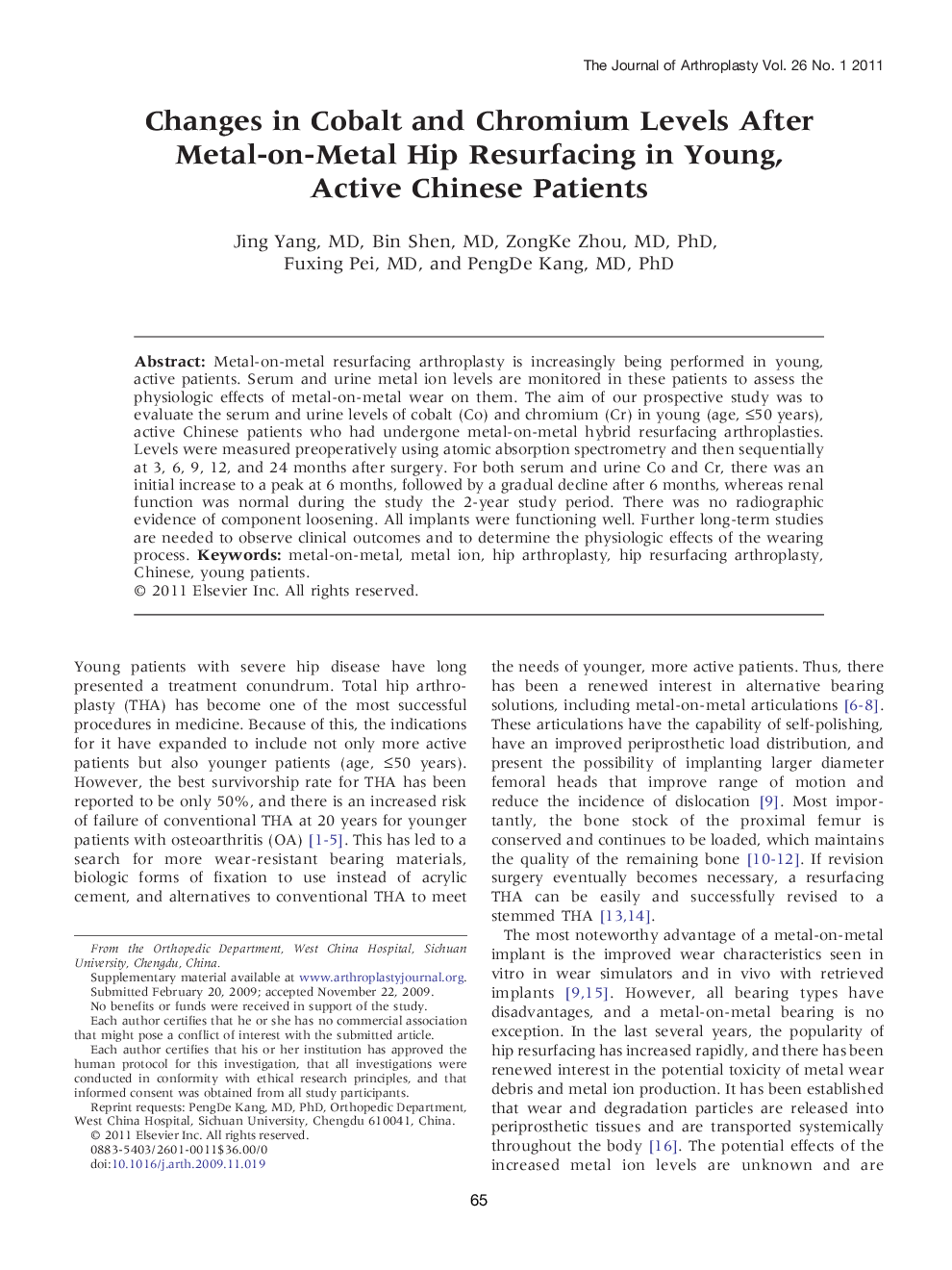| Article ID | Journal | Published Year | Pages | File Type |
|---|---|---|---|---|
| 4062895 | The Journal of Arthroplasty | 2011 | 7 Pages |
Abstract
Metal-on-metal resurfacing arthroplasty is increasingly being performed in young, active patients. Serum and urine metal ion levels are monitored in these patients to assess the physiologic effects of metal-on-metal wear on them. The aim of our prospective study was to evaluate the serum and urine levels of cobalt (Co) and chromium (Cr) in young (age, â¤50 years), active Chinese patients who had undergone metal-on-metal hybrid resurfacing arthroplasties. Levels were measured preoperatively using atomic absorption spectrometry and then sequentially at 3, 6, 9, 12, and 24 months after surgery. For both serum and urine Co and Cr, there was an initial increase to a peak at 6 months, followed by a gradual decline after 6 months, whereas renal function was normal during the study the 2-year study period. There was no radiographic evidence of component loosening. All implants were functioning well. Further long-term studies are needed to observe clinical outcomes and to determine the physiologic effects of the wearing process.
Related Topics
Health Sciences
Medicine and Dentistry
Orthopedics, Sports Medicine and Rehabilitation
Authors
Jing MD, Bin MD, ZongKe MD, PhD, Fuxing MD, PengDe MD, PhD,
